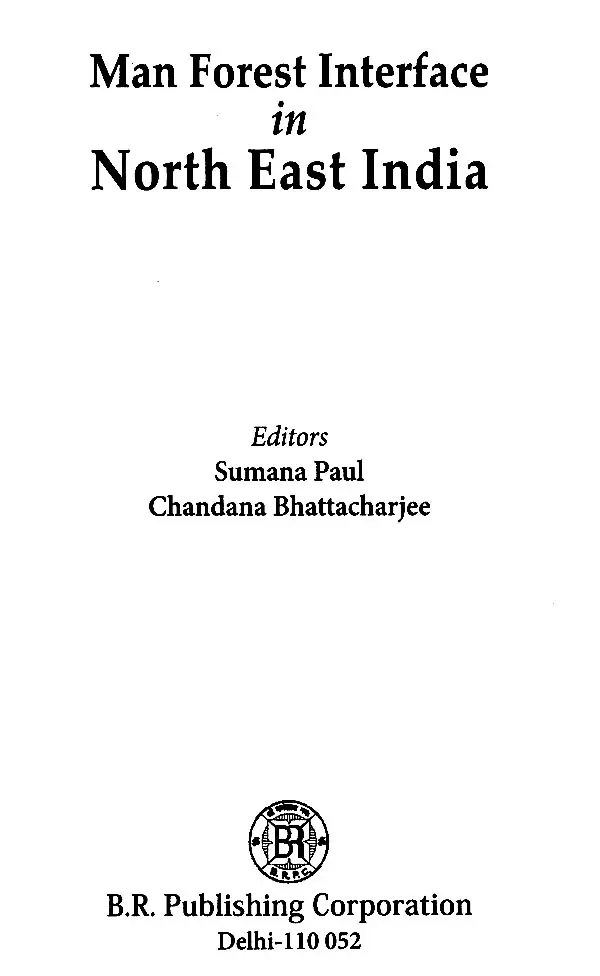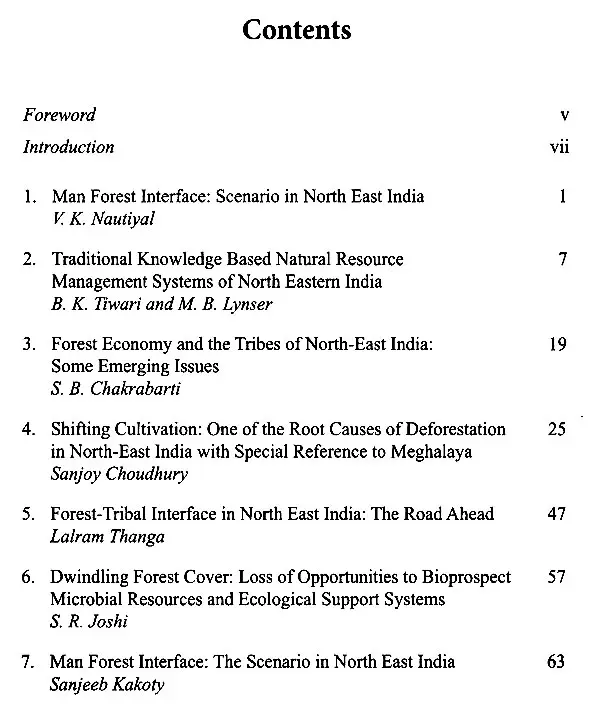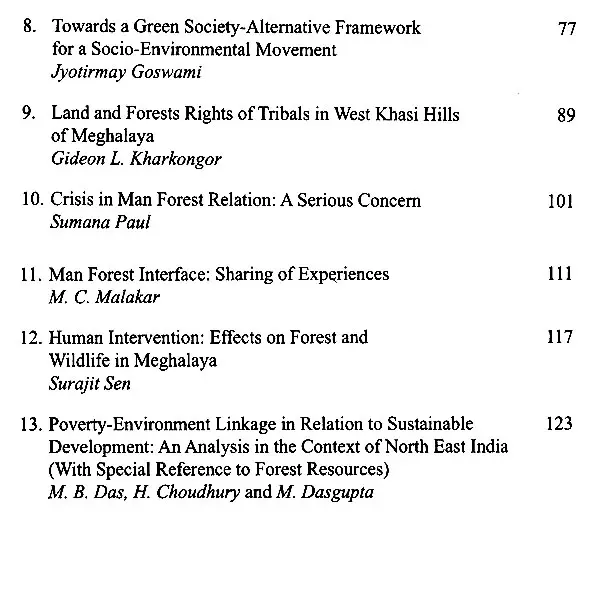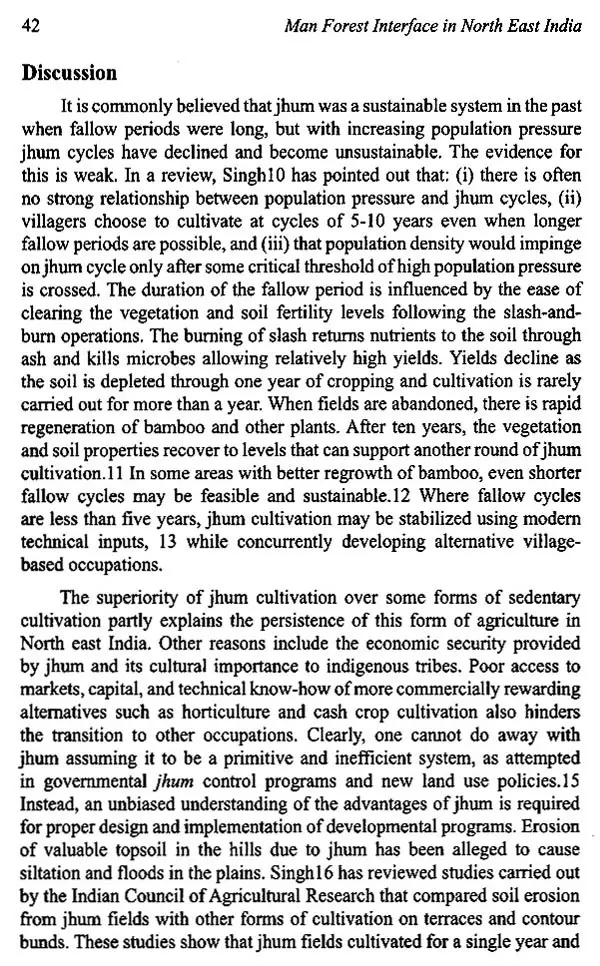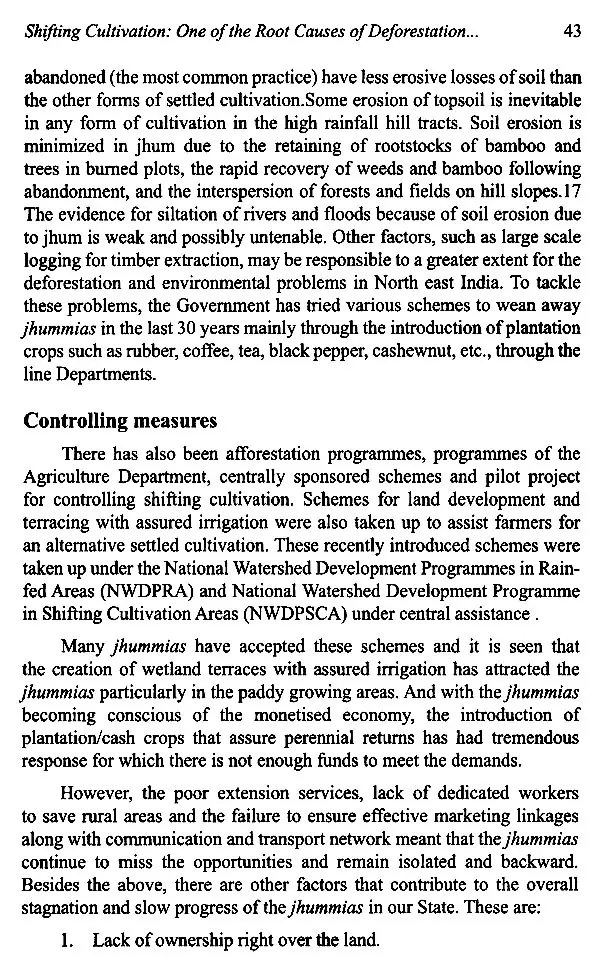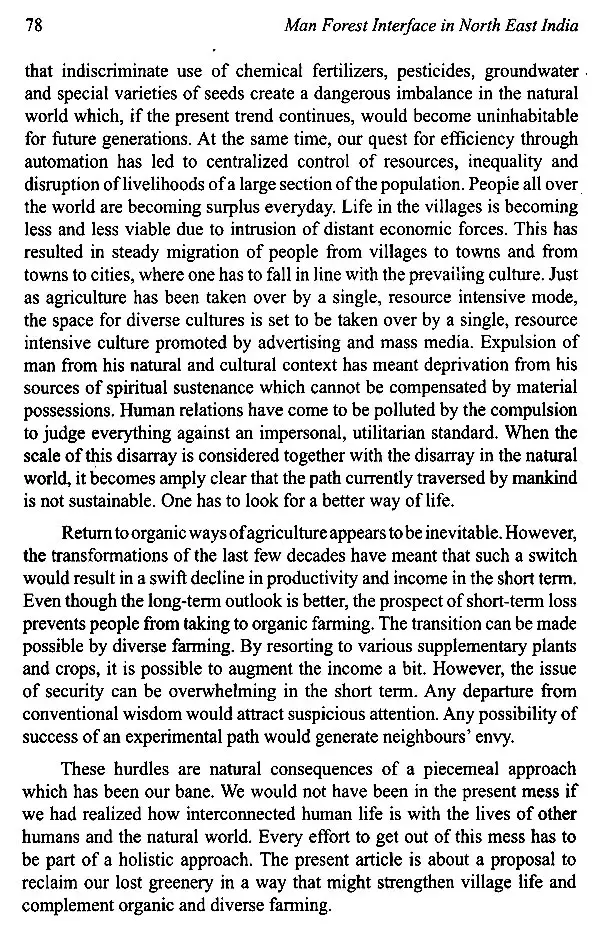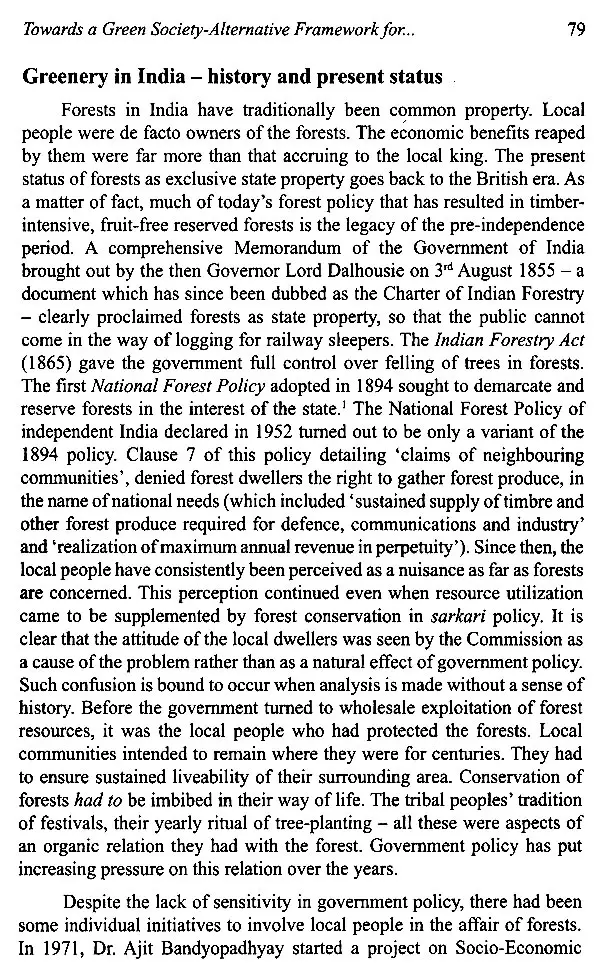
Man Forest Interface in North East India
Book Specification
| Item Code: | UAM932 |
| Author: | Sumana Paul & Chandana Bhattacharjee |
| Publisher: | B.R. Publishing Corporation |
| Language: | English |
| Edition: | 2018 |
| ISBN: | 9789387587465 |
| Pages: | 150 |
| Cover: | HARDCOVER |
| Other Details | 10.00 X 6.50 inch |
| Weight | 350 gm |
Book Description
Since the dim ages of the past forest has played an important role in the life and culture of the people, may it be hunters and gatherers or the people practising swidden cultivation with palaeo-technic means. With the passage of time large scale influx of human population into the forest area has disturbed the serenity of the green cover of the earth's surface as well as jeopardised the balance of natural resources. This has also affected the food-chain of the forest resulting into starvation, death and catastrophe. Reclamation of forest land for human habitation was another important degrading factor for the loss of forest cover. Denudation of forest forced the natural habitat of the animal world to shift either further to the core areas or to have a man-animal conflict. The scenario has been ubiquitous all over the world resulting into decrease in the forest cover area. The present volume deals with such academic experiences of the senior forest officials, anthropologists, sociologists, geographers, environmentalists. management professionals, educationists and education policy makers drawn from different parts of the country, focusing on manforest issues of North East India located in the far flung part of the country. The volume also deals with the shifting paradigms of experts, who view man-forest interface in varying perspectives.
Sri V. K. Nautiyal, former Principal Chief Conservator of Forests, Department of Forests. Government of Meghalaya. Professor B. K. Tiwari and M. B. Lynser, Department of Environmental Studies, North-Easter Hill University, Shillong. Dr. Satya Brata Chakrabarti. presently the General Secretary, The Asiatic Society. Kolkata, Sri Sanjoy Choudhury. Assistant Professor.National Defence Academy. Pune. Lalram Thanga. Chief Wildlife Warden. Dr. S. R. Joshi.Microbiology Laboratory. Department of Biotechnology & Bioinformatics.North-Eastern Hill University, Shillong. Dr. Sanjeeb Kakoty, Faculty. Rajiv Gandhi Indian Institute of Management. Shillong Jyotirmay Goswami, Kolkata, Gideon L Kharkongor, Faculty. Dept of Geography, St. Edmund's College. Shillong. Sumana Paul. Faculty, Department of Education, Women's College. Shillong Sri M. C. Malakar, IFS (Retd.) Ex. PCCF (Wildlife). Assam. Sri Surajit Sen. Faculty, ICFAI University, Shillong Ms M. B. Das, Ms. H. Choudhury and Dr. (Ms) M. Dasgupta, Faculty. Department of Economics, Women's College. Shillong
Dr. Sumana Paul (b. 1967). teacher, researcher in social sciences and a social worker obtained her M. A.. B. Ed. and Ph. D. degrees from the North-Eastern Hill University, Shillong. Having a teaching experience of 26 years she is associated with a number of academic institutions of high repute. Credited with authorship of six books and more than one hundred articles published in national and international journals and edited volumes she is currently engaged in researches focussing her area of interest in the north eastern states of India. She has also coordinated a number of research projects, seminars, workshops and training programmes. Currently she is the Head of the Department of Education, Women's College. Shillong.
Dr. Chandana Bhattacharjee born in Shillong, she has pursued her academic career under NEHU, the prestigious Central University. She has been serving in the Women's College as the Head of the Department in Anthropology over the last twenty years. She has authored a number of articles published in books and journals.
I consider it as an honour shown to me to be asked to write the Foreword to the volume entitled Man Forest Interface in North East India. The volume comprises informative articles presented in the seminar organized by the Women's College, Shillong on 8th and 9th July, 2009.
As a seminar theme, the current status of forest and forest-based natural wealth in North East India has great importance. The manner in which forests are rapidly dwindling due primarily to human interventions invites a serious and dispassionate assessment. The day is perhaps not far off when the threshold point of nature's power to recoup and regenerate itself shall be crossed and we shall have no one to blame for such a catastrophe but ourselves. The significance of forest and need to remind ourselves of the age-old tradition of co-existence of man with the forest is more now than ever before. We all know that the traditional societies were forest-dependant societies for their survival. Yet they were careful never to over-exploit what nature gave them. Somewhere along the way, we have forsaken the adage that Man Forest relationship is one of the unique equilibria between man's need and forest's capacity to give.
The character of the relationship between the two components of the eco-system, man and forest, began changing fast with the increase of population coupled with ever-increasing demand for land and ever expanding greed of man for forest produce, especially timber. New technologies were used, at times mindlessly, all over the world for tapping forest wealth and India too did lot lag behind in this respect. The seminar theme has rightly been chosen to discuss about forest-related situation obtaining in the north eastern part of India about 84 per cent of which was covered with forest not so long ago. We seem to be happy today if the figure is around 33 per cent of the total land area.
Forest reserves are the gifts of nature. It preserves the genetic diversity of living resources. Genetic diversity is the raw-material for scientific and industrial innovation. The most important produce from forest is wood. The use of wood ranges from domestic use to that in commerce, communication, defence, etc. Despite big leaps taken in technology, man could not dispense with wood as a source of energy.
Forestry offers the rural people a livelihood. They harvest and process different forest products from timber and fuel wood to mushroom and medicines. Improving and expanding the forest resource has an important additional spin-off. Forest stabilizes the environment. On the foothills of Himalayas, deforestation happens to be the principal cause of soil erosion, which affects not only hill slopes and grazing grounds but also immensely increases the potentiality for flooding and silting up of reservoirs. The principal aim of Forest Policy, thus, must be to ensure environmental stability and maintenance of ecological balance which are vital for sustenance of all life forms. However, despite the fact that forest management in India had a glorious past (which dates back to several centuries Before Christ), in recent times Indian forestry is facing a number of challenges.
Forests supply timber, firewood, fruits and among other raw materials for industries. Through transpiration forests supply moisture to the atmosphere and contribute to the increased rainfall. Forests are powerful checks against soil erosion. The fertility of the soil is increased by the addition of decomposed forest products. Forests also control floods and the velocity of the air current.
